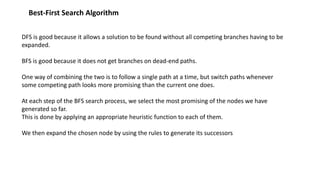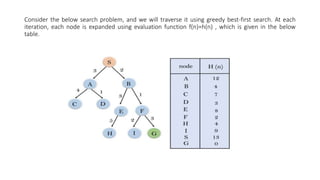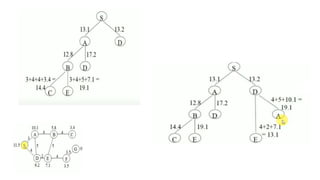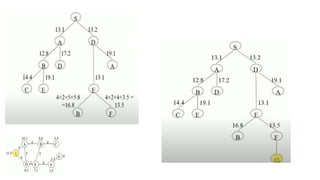This document describes and compares best-first search, breadth-first search, depth-first search, and A* search algorithms. Best-first search combines advantages of BFS and DFS by expanding the most promising node at each step. It uses heuristic functions to evaluate nodes and guide the search. A* search finds the shortest path using a heuristic function to evaluate the cost of reaching the goal from each state. It uses OPEN and CLOSED lists to track nodes during the search process.





![• In this search example, we are using
two lists which are OPEN and CLOSED
Lists. Following are the iteration for
traversing the above example
Expand the nodes of S and put in the CLOSED list
Initialization: Open [A, B], Closed [S]
Iteration 1: Open [A], Closed [S, B]
Iteration 2: Open [E, F, A], Closed [S, B]
: Open [E, A], Closed [S, B, F]
Iteration 3: Open [I, G, E, A], Closed [S, B, F]
: Open [I, E, A], Closed [S, B, F, G]
Hence the final solution path will be: S----> B----->F----> G](https://image.slidesharecdn.com/informedsearch-230927172321-40a652c4/85/informed-search-pptx-6-320.jpg)




